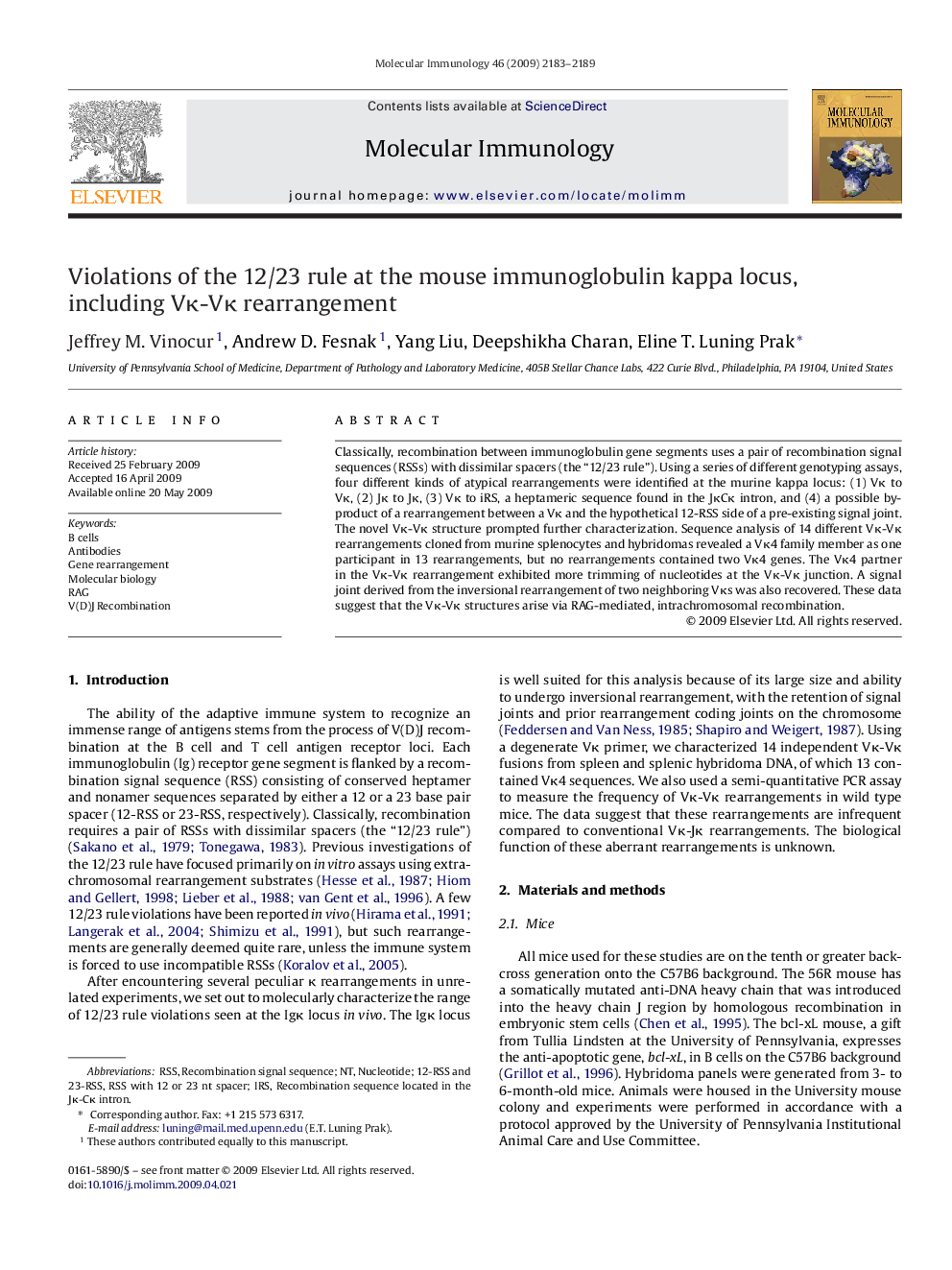| Article ID | Journal | Published Year | Pages | File Type |
|---|---|---|---|---|
| 2832678 | Molecular Immunology | 2009 | 7 Pages |
Classically, recombination between immunoglobulin gene segments uses a pair of recombination signal sequences (RSSs) with dissimilar spacers (the “12/23 rule”). Using a series of different genotyping assays, four different kinds of atypical rearrangements were identified at the murine kappa locus: (1) Vκ to Vκ, (2) Jκ to Jκ, (3) Vκ to iRS, a heptameric sequence found in the JκCκ intron, and (4) a possible by-product of a rearrangement between a Vκ and the hypothetical 12-RSS side of a pre-existing signal joint. The novel Vκ-Vκ structure prompted further characterization. Sequence analysis of 14 different Vκ-Vκ rearrangements cloned from murine splenocytes and hybridomas revealed a Vκ4 family member as one participant in 13 rearrangements, but no rearrangements contained two Vκ4 genes. The Vκ4 partner in the Vκ-Vκ rearrangement exhibited more trimming of nucleotides at the Vκ-Vκ junction. A signal joint derived from the inversional rearrangement of two neighboring Vκs was also recovered. These data suggest that the Vκ-Vκ structures arise via RAG-mediated, intrachromosomal recombination.
